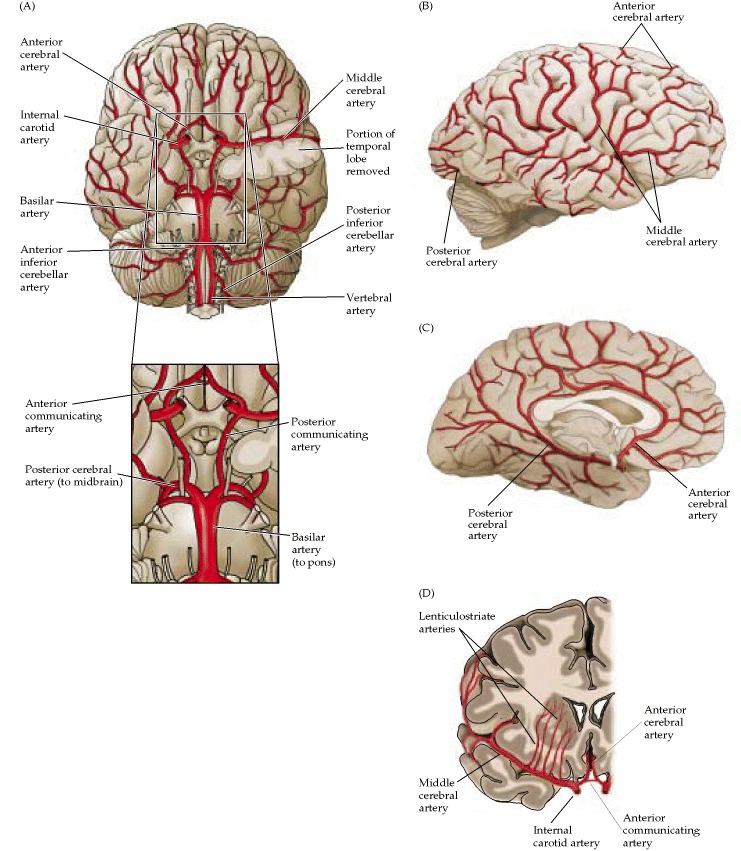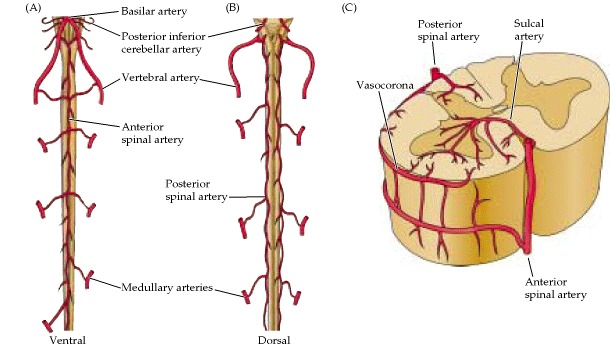

The entire blood supply of the brain and spinal cord depends on two sets of branches from the dorsal aorta. The vertebral arteries arise from the subclavian arteries, and the internal carotid arteries are branches of the common carotid arteries. The vertebral arteries and the ten medullary arteries that arise from segmental branches of the aorta provide the primary vascularization of the spinal cord. These medullary arteries join to form the anterior and posterior spinal arteries. If any of the medullary arteries are obstructed or damaged (during abdominal surgery, for example), the blood supply to specific parts of the spinal cord may be compromised.
The pattern of resulting neurological damage differs according to whether the supply to the posterior or anterior artery is interrupted. As might be expected from the arrangement of ascending and descending neural pathways in the spinal cord, loss of the posterior supply generally leads to loss of sensory functions, whereas loss of the anterior supply more often causes motor deficits.
The pattern of resulting neurological damage differs according to whether the supply to the posterior or anterior artery is interrupted. As might be expected from the arrangement of ascending and descending neural pathways in the spinal cord, loss of the posterior supply generally leads to loss of sensory functions, whereas loss of the anterior supply more often causes motor deficits.
Read more at NCBI.
No comments:
Post a Comment